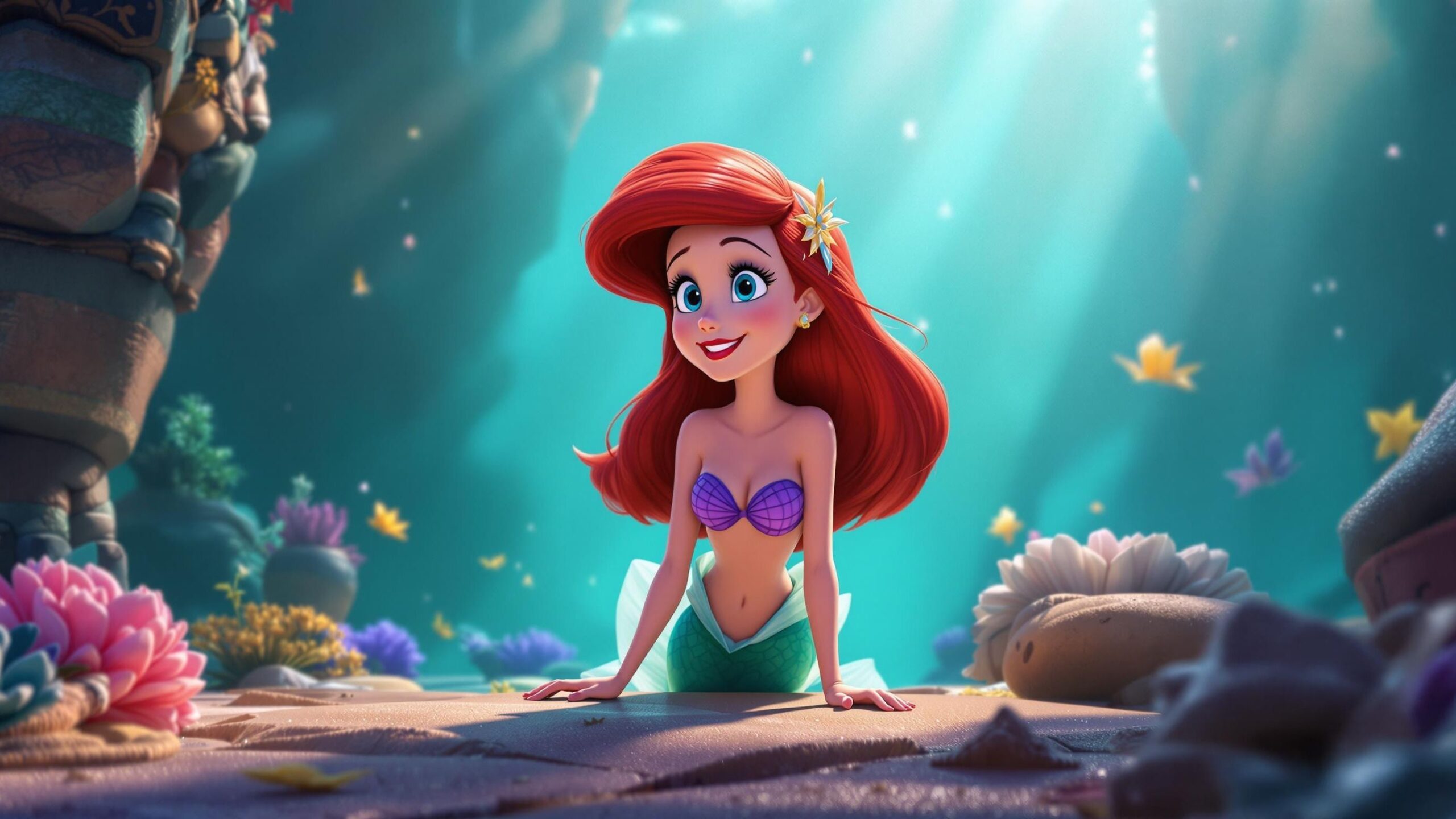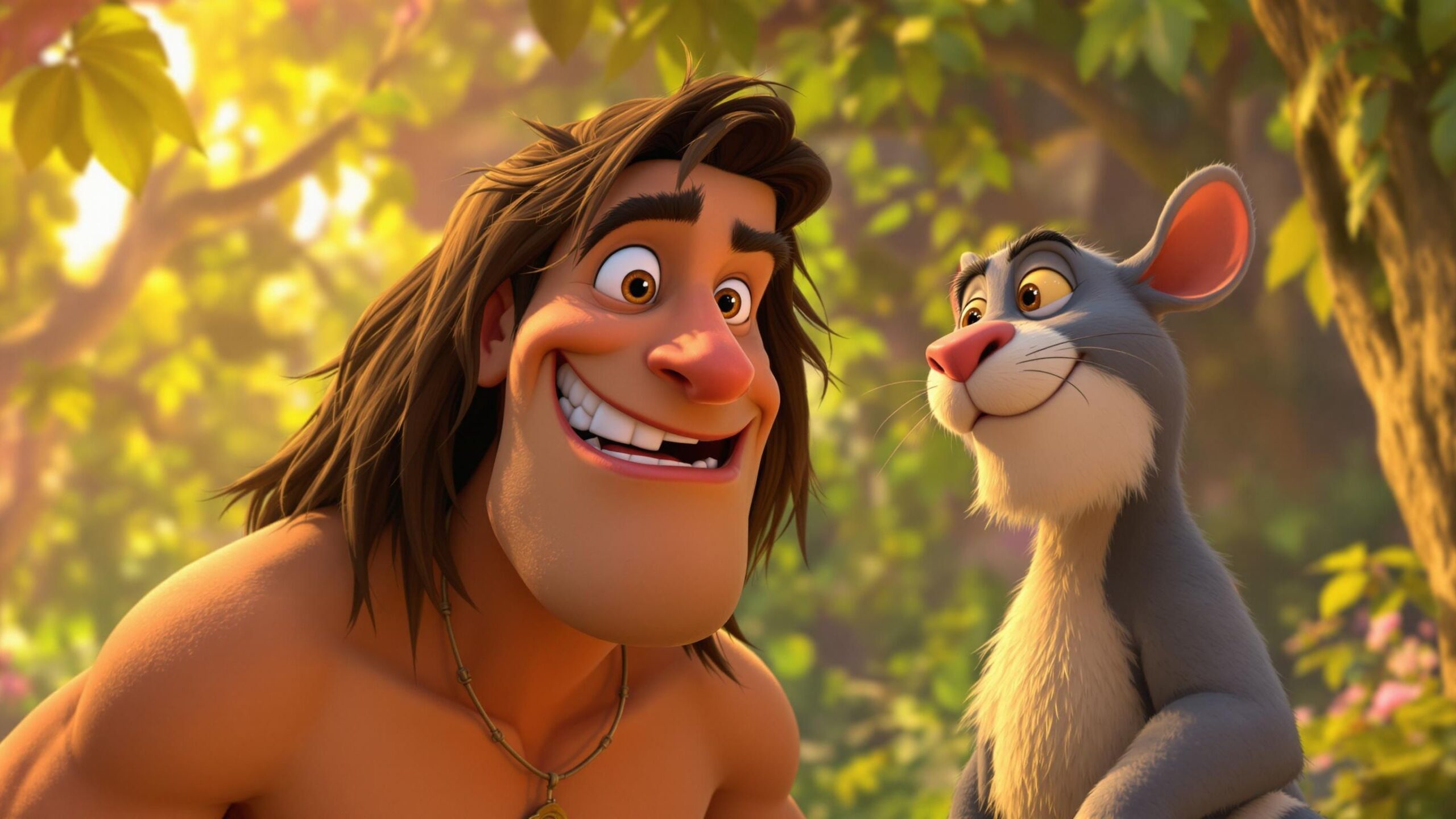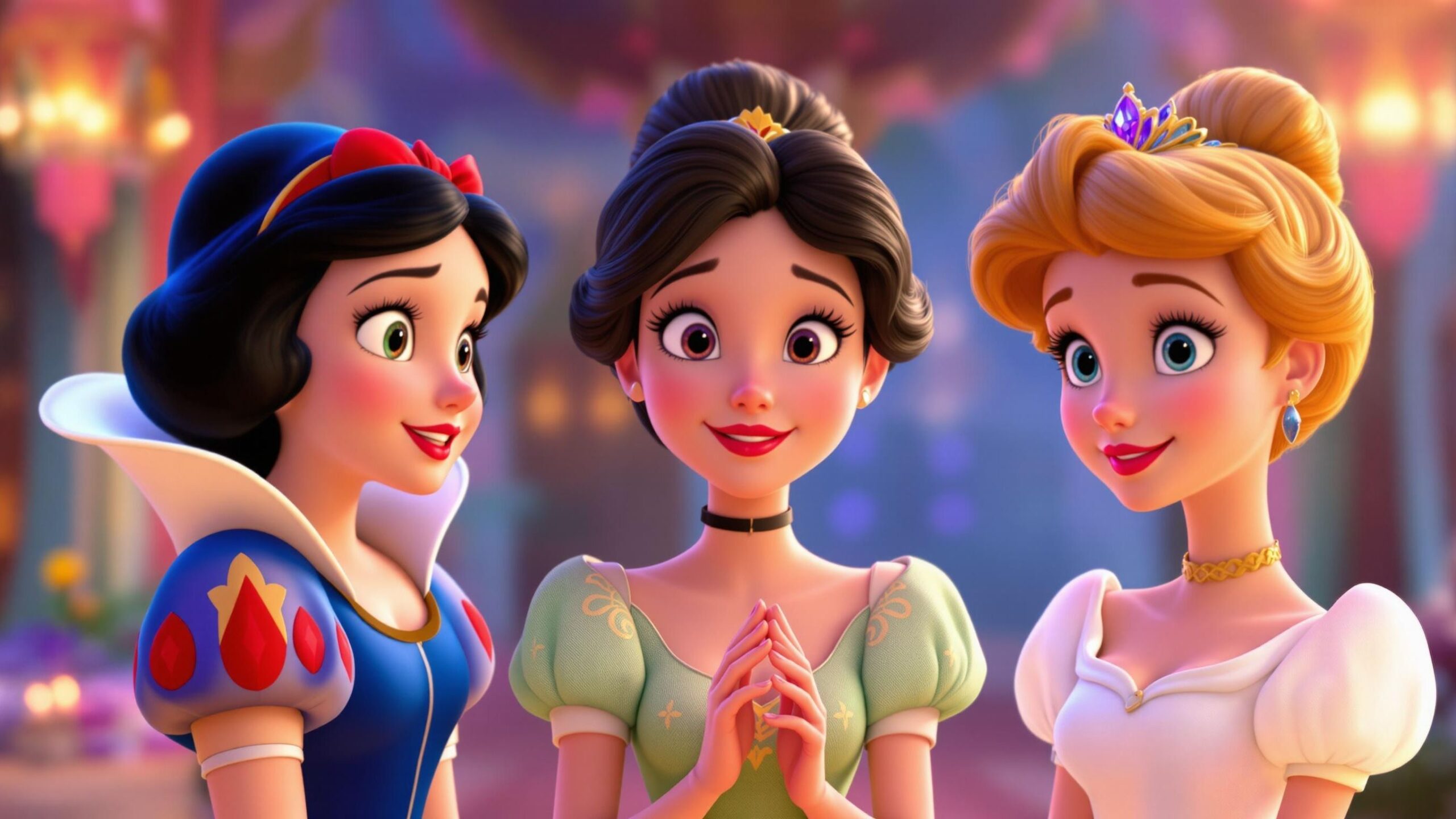The Fearless Princess Under the Sea
When you think of Disney princesses, you might picture tiaras, magic carpets, or enchanted forests—but few of them have the daring spirit of a sixteen-year-old mermaid who dreams of dancing on land. Ariel, the iconic red-haired heroine of The Little Mermaid, isn’t just a curious collector of human treasures—she’s bold, brave, and just a little bit rebellious. From diving into forbidden shipwrecks to making deals with sea witches, Ariel’s story is a non-stop adventure fueled by heart and courage. In a kingdom where the rules are set in coral and the ocean current doesn’t like change, Ariel dares to defy expectations. She’s not just a dreamer—she acts. And sometimes, those actions are downright fearless. So, let’s dive deep—pun absolutely intended—into the boldest moments that prove Ariel is one of Disney’s most daring princesses.
Breaking the Surface: Ariel Rescues Prince Eric
One of the first and most unforgettable bold moments comes early in the film when Ariel spots a ship in distress during a storm. Despite the warnings from her fishy friends—and the fact that, you know, it’s totally illegal in Atlantica to mingle with humans—Ariel swims straight into the chaos.
While thunder cracks and waves roar, Ariel zooms through the wreckage to rescue Prince Eric, dragging him to shore with all the strength her fins can manage. This isn’t just an act of kindness—it’s her first open act of rebellion against her father’s rules and the underwater world’s fears about humans.
She doesn’t wait for someone else to step in. She doesn’t hesitate. She follows her heart and risks everything to save someone she barely knows. That, right there, is boldness in its purest form.
Singing on the Shore: The Ballad of Bravery
Once Ariel saves Eric and pulls him to safety on the beach, she doesn’t simply slink away unnoticed. No, our girl sings to him. With sunlight bathing the scene and Eric unconscious at her side, Ariel lets her voice soar in one of the most iconic ballads of Disney history.
This moment is more than romantic—it’s powerful. Her song becomes a signature of her soul, something Eric remembers even after waking. It’s brave because she’s not hiding anymore. She’s putting herself out there, even if it means being discovered or scolded.
Ariel’s voice is her greatest gift, and in that moment, she uses it with zero fear. It’s a siren call, not just of love, but of identity and freedom.
Defying Her Father: The Grotto Showdown
What’s bolder than standing up to your dad when he’s the King of the Sea and armed with a glowing trident? When Triton discovers Ariel’s secret collection of human treasures, his rage explodes like a tidal wave. He blasts apart her beloved grotto in one of the film’s most heartbreaking scenes.
But Ariel doesn’t crumble. She doesn’t beg or back down. She stands her ground, arguing that her passion for the human world isn’t wrong—it’s misunderstood.
It takes real guts to speak your truth in the face of destruction, especially when it comes from someone you love. Ariel’s emotional strength and refusal to be silenced show that she’s not just a rebellious teen—she’s a mermaid with conviction.
Making a Deal with Ursula
Alright, this might be one of the most controversial bold moves Ariel makes—but there’s no denying it’s daring. Desperate to join the human world and be with Eric, Ariel goes to the one creature everyone fears: Ursula the Sea Witch.
Ariel enters the lair of an actual villain, surrounded by writhing souls and eerie green light, and willingly signs a magical contract that could cost her everything—including her voice.
This is where Ariel’s boldness flirts with recklessness, but you can’t deny her determination. She’s willing to give up her voice, her identity, and her home for a shot at something more. That kind of leap takes nerve—and maybe a little naivety—but it’s also undeniably gutsy.
Adjusting to Life on Land (Without a Voice!)
Imagine being tossed into a new world with no legs, no clue how forks work, and—oh yeah—no voice. Instead of panicking, Ariel embraces her challenge with wide-eyed wonder and persistent effort.
She tries to navigate dinners, dances, and romantic boat rides using only her facial expressions and body language. And somehow? She pulls it off. Her charm, humor, and resilience shine through.
She doesn’t let fear stop her from enjoying the experience or trying her best to connect with Eric. It’s bold because she could have given up the moment she hit the shore—but instead, she leans in and adapts. No voice? No problem.
Kissing Eric in Three Days? Challenge Accepted
Let’s not forget the whole point of Ursula’s deal: Ariel has three days to make Eric fall in love with her, or she loses everything.
Instead of sitting around waiting for love to happen, Ariel goes all in. She strolls through towns, tours the palace, and even survives an awkward dinner with a fork in her hair. The iconic “Kiss the Girl” scene in the lagoon is one of the boldest moments because Ariel is so close to succeeding—and she never gives up.
Even with obstacles (like Ursula’s sabotage), Ariel keeps pushing forward. She’s brave enough to pursue what she wants, even under intense pressure and impossible odds.
Charging After the Wedding Ship
When Ursula disguises herself as Vanessa and hypnotizes Eric, Ariel doesn’t sit back and cry. She springs into action. Despite losing her voice and being stuck with two legs and zero power, she races to stop the wedding before the sun sets.
She leaps into the ocean, fights through waves, and climbs aboard the ship, all while her chance at freedom is slipping away. It’s a moment of pure desperation and courage.
Even without magic or a plan, Ariel shows that boldness is about action. She doesn’t hesitate. She fights for the truth and for her future, even when all hope seems lost.
Taking Down Ursula—Even Powerless
In the movie’s epic climax, Ursula grows into a monstrous, whirlpool-summoning sea giant. Ariel has no powers. No fins. No voice. No backup. Just herself.
And yet—she doesn’t run. She dives into the water, swims toward the storm, and tries to protect Eric, her father, and her people from Ursula’s wrath. At one point, she even distracts the sea witch long enough for Eric to spear her with the ship’s bow.
That’s not a passive princess move. That’s a heroic one. Ariel doesn’t need a weapon to be brave. Her strength lies in her fearlessness, even when she’s completely vulnerable.
Standing Tall Before Triton—Again
After all is said and done, Ariel returns to her family, fully transformed by her experiences. And in one of the film’s final emotional punches, she doesn’t beg to be human again. She stands silently, letting her father see her love, her growth, and her maturity.
And Triton, in a moment of rare softness, gives her legs and lets her go.
This moment isn’t loud or flashy—but it’s bold. Because sometimes, the bravest thing you can do is wait. Ariel trusts that her journey speaks for itself. And it does.
Her transformation isn’t just physical—it’s emotional. She’s grown into someone who takes responsibility for her choices and inspires change in others.
Becoming a Bridge Between Worlds
Though it happens after the credits roll (and more clearly in the sequel), Ariel’s final boldest act is becoming the link between land and sea. She starts a new life on land while keeping ties with her underwater family, ultimately raising a daughter who lives between both worlds.
Ariel creates a bridge between two cultures that were once divided. And she does it with kindness, courage, and an open heart.
Her legacy isn’t just about falling in love. It’s about being brave enough to imagine a different world—and bold enough to make it real.
Ariel’s Brand of Boldness
What makes Ariel’s boldness so special is that it’s never about brute strength. It’s about passion. Curiosity. Heart. She doesn’t fight dragons or lead armies, but she swims against the tide of tradition, fear, and expectation.
She’s curious in a world that fears questions. She’s hopeful in a world that teaches caution. And she’s willing to trade comfort for freedom, even when it hurts.
Ariel isn’t perfect—she makes mistakes, takes risks, and gets herself into trouble—but that’s what makes her real. Her courage isn’t always clean or calculated, but it’s raw and authentic. She shows that being bold means listening to your inner voice—even when the world tells you to stay quiet.
Why Ariel Still Inspires
Decades after The Little Mermaid first hit screens, Ariel remains one of the most iconic Disney heroines. Not just because of her voice or her hair or her signature seashells—but because of her fearless spirit. Her story isn’t just a fairy tale—it’s a coming-of-age tale wrapped in waves and music.
She’s the girl who wanted more and wasn’t afraid to go find it. And in doing so, she showed an entire generation how to be curious, how to be bold, and how to swim toward your dreams—no matter how deep the ocean or high the odds.
Bold Moves Beyond the Original: Ariel in The Little Mermaid II
Ariel’s boldness didn’t stop after the credits rolled in the original film. In The Little Mermaid II: Return to the Sea, Ariel takes on an entirely new challenge—not as a wide-eyed teen chasing adventure, but as a protective mother determined to keep her daughter, Melody, safe from the dangers of the sea.
This time, Ariel isn’t seeking freedom for herself—she’s giving it up. In one of the sequel’s most courageous moves, Ariel makes the painful decision to hide the truth about Melody’s heritage, even building a massive wall to separate her daughter from the ocean entirely. It’s a choice made out of love and fear, and while it’s controversial, it’s undeniably bold.
And when things go wrong? Ariel doesn’t hesitate to dive back into the water—literally. She temporarily gives up her human form and returns to the sea to rescue Melody. It’s full-circle storytelling that shows Ariel’s boldness has grown with her. She’s not just brave for herself anymore—she’s brave for her family.
In the sequel, Ariel transforms from the dream-chasing teen to the fierce protector. She proves that boldness comes in many forms, and sometimes the hardest choices are the ones we make for others.
Ariel’s Legacy: A Blueprint for Brave Disney Heroines
Ariel didn’t just change her own world—she changed the entire landscape of animated princesses. Before her, many Disney heroines waited for things to happen. Ariel? She made things happen. She broke rules, challenged authority, and drove her own story forward.
Her impact echoes throughout Disney’s future heroines. Think about it—would we have Belle defying villagers, Jasmine sneaking out of the palace, or Moana sailing into the unknown without Ariel paving the way? Probably not. She shattered the glass aquarium ceiling with her daring spirit and sparked a new wave of princesses who choose their own paths.
What’s especially bold about Ariel is her unapologetic curiosity. She’s not ashamed of wanting something different. That kind of fearless desire inspired characters like Rapunzel, who longed to see the lanterns despite being told not to, or Elsa, who embraced her powers instead of hiding them.
Ariel made it okay for Disney princesses to want more—and to chase after it with everything they had.
The Creators Behind the Courage
Behind Ariel’s story is a team of artists and storytellers who took a bold leap themselves. After a string of box office flops in the 1980s, Disney Animation took a chance with The Little Mermaid—a return to fairy tales, but with a fresh, modern spin.
Animators gave Ariel expressive, fluid movements that reflected her spirit. Glen Keane, the supervising animator behind Ariel, infused her with both grace and grit. Her facial expressions, especially that longing gaze toward the surface world, captured emotions we hadn’t seen in Disney characters before. She wasn’t just pretty—she felt real.
Lyricist Howard Ashman and composer Alan Menken infused the film with Broadway-level emotion. Songs like “Part of Your World” weren’t just catchy—they told a story of longing, risk, and determination. Ashman, who was openly gay at a time when representation was rare, saw something powerful in Ariel’s journey of feeling “different.” That layer of outsider longing gave the film a soul.
The creative team didn’t just make a princess—they made a symbol of bravery. And that bold artistic vision helped launch the Disney Renaissance.




